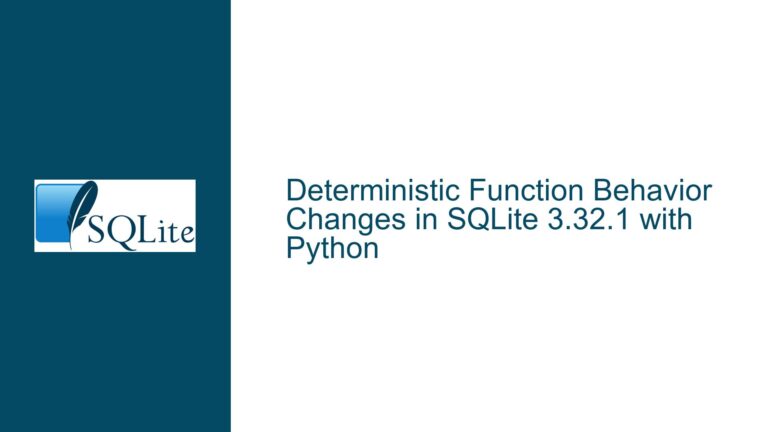Optimizing Delphi FDTable Performance with SQLite Lookup Fields
Understanding the Performance Impact of Lookup Fields in Delphi FDTable with SQLite
When working with Delphi’s FireDAC components, such as FDTable, in conjunction with SQLite, developers often encounter performance bottlenecks, particularly when dealing with lookup fields. The issue described in the discussion revolves around a significant slowdown in record iteration when lookup fields are present in the FDTable. This slowdown is not observed when the lookup fields are removed, indicating that the presence of these fields is the primary factor affecting performance.
To fully grasp the issue, it’s essential to understand how lookup fields operate within the context of FireDAC and SQLite. Lookup fields are designed to fetch related data from another dataset or table based on a specified key. While this functionality is incredibly useful for displaying related information without manually joining tables, it introduces additional overhead. Each time a record is accessed, the lookup field triggers a query to fetch the related data, which can lead to a substantial performance hit, especially when dealing with large datasets.
In the provided code snippet, the developer attempts to mitigate the performance impact by disabling controls and auto-calculation of fields. However, these measures do not seem to alleviate the slowdown caused by the lookup fields. This suggests that the performance issue is deeply rooted in how FireDAC handles lookup fields internally, rather than being a surface-level problem that can be resolved by simply disabling UI updates or field calculations.
Investigating the Root Causes of Slow Performance with Lookup Fields
The performance degradation observed when using lookup fields in FDTable with SQLite can be attributed to several factors. First and foremost, the nature of lookup fields inherently requires additional queries to be executed for each record. In the context of SQLite, which is a lightweight, file-based database, these additional queries can quickly become a bottleneck, particularly when dealing with thousands of records.
Another potential cause is the way FireDAC manages the caching of lookup field data. If the data is not cached efficiently, each iteration over the dataset could result in redundant queries being executed, further exacerbating the performance issue. Additionally, the way FireDAC interacts with SQLite’s engine may not be optimized for handling lookup fields, leading to suboptimal query execution plans or unnecessary overhead.
It’s also worth considering the impact of the underlying SQLite database design. If the tables involved in the lookup relationships are not properly indexed, or if the relationships are not defined efficiently, this could lead to slower query execution times. Furthermore, the version of SQLite being used, as well as the specific configuration settings, could play a role in the observed performance issues.
Lastly, the Delphi environment itself, including the version of the FireDAC components and the overall application architecture, could influence how efficiently lookup fields are handled. For instance, older versions of FireDAC may not have the same level of optimization for SQLite as newer versions, and certain application design patterns could inadvertently introduce additional overhead when working with lookup fields.
Comprehensive Troubleshooting and Solutions for Optimizing FDTable Performance with Lookup Fields
To address the performance issues associated with lookup fields in FDTable when using SQLite, a multi-faceted approach is required. The following steps outline a comprehensive strategy for identifying and resolving the root causes of the slowdown.
Step 1: Analyze the Lookup Field Configuration
Begin by examining the configuration of the lookup fields in your FDTable. Ensure that the lookup fields are defined correctly and that the relationships between the tables are properly indexed. If the lookup fields are based on complex queries or involve multiple joins, consider simplifying the relationships or breaking them down into smaller, more manageable queries.
Step 2: Optimize SQLite Database Design
Review the design of your SQLite database to ensure that it is optimized for the queries being executed. This includes creating appropriate indexes on the columns used in the lookup relationships, as well as ensuring that the tables are normalized to reduce redundancy. Additionally, consider using SQLite’s built-in tools, such as the EXPLAIN QUERY PLAN statement, to analyze the execution plan of your queries and identify any potential bottlenecks.
Step 3: Evaluate FireDAC Component Settings
Examine the settings of your FireDAC components, particularly the FDTable and any related datasets. Look for options that control caching, query execution, and data fetching. For example, enabling the FetchOptions.Cache property can help reduce the number of queries executed by caching the results of lookup field queries. Additionally, consider adjusting the FetchOptions.Mode property to optimize how data is retrieved from the database.
Step 4: Profile and Monitor Query Performance
Use profiling tools to monitor the performance of your queries and identify any areas where improvements can be made. This includes measuring the execution time of individual queries, as well as tracking the overall performance of the FDTable as it iterates over the dataset. By identifying the specific queries or operations that are causing the slowdown, you can focus your optimization efforts on those areas.
Step 5: Consider Alternative Approaches to Lookup Fields
If the performance issues persist despite optimizing the lookup field configuration and database design, consider alternative approaches to achieving the same functionality. For example, instead of using lookup fields, you could manually join the tables in your SQL queries and fetch the related data as part of the initial dataset. This approach can reduce the overhead associated with lookup fields and improve overall performance.
Step 6: Update FireDAC and SQLite Versions
Ensure that you are using the latest versions of FireDAC and SQLite, as newer versions may include performance improvements and bug fixes that address the issues you are experiencing. Additionally, review the release notes for any updates or changes that could impact the performance of lookup fields.
Step 7: Consult Delphi and FireDAC Documentation and Community
Finally, consult the official Delphi and FireDAC documentation, as well as community forums and resources, for additional guidance and best practices. The Delphi community is active and knowledgeable, and there may be specific recommendations or workarounds that can help you optimize the performance of your FDTable with lookup fields.
By following these steps, you can systematically identify and address the root causes of the performance issues associated with lookup fields in FDTable when using SQLite. While the process may require some trial and error, the end result will be a more efficient and responsive application that leverages the full power of Delphi and SQLite.
Conclusion
In conclusion, the performance issues encountered when using lookup fields in Delphi’s FDTable with SQLite are multifaceted and require a thorough understanding of both the FireDAC components and the SQLite database. By carefully analyzing the configuration of lookup fields, optimizing the database design, and leveraging the latest tools and techniques, developers can significantly improve the performance of their applications. Additionally, exploring alternative approaches to achieving the same functionality and staying up-to-date with the latest versions of FireDAC and SQLite can further enhance performance and ensure a smooth user experience. With the right approach and a commitment to optimization, it is possible to overcome the challenges posed by lookup fields and create high-performing Delphi applications that fully leverage the capabilities of SQLite.






